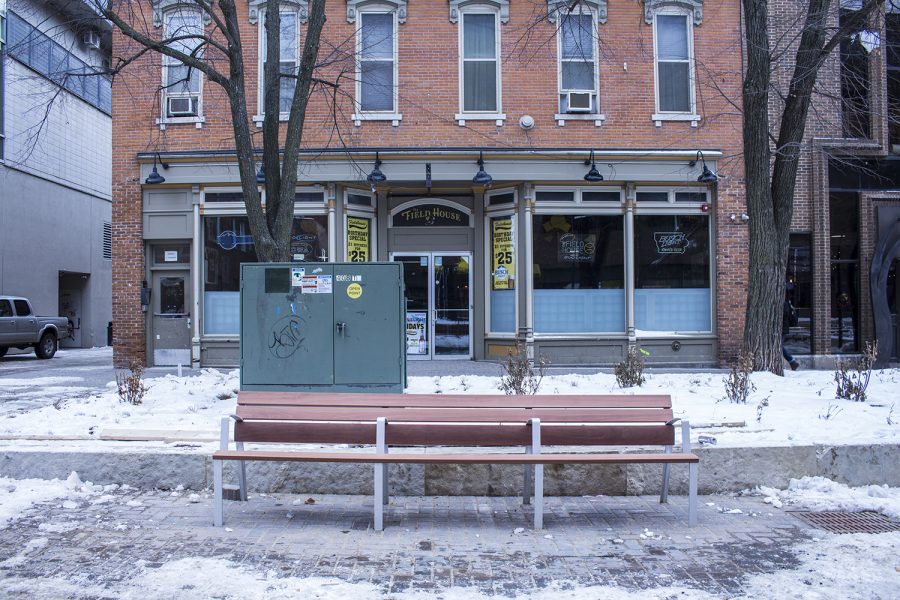Opinion | Bring back the focus to ending homelessness
Anti-homeless architecture has taken the spotlight away from the real issue — homelessness itself.
Benches are seen at the Ped Mall on Wednesday, November 28, 2018.
October 11, 2021
Have you ever been down to the Pedestrian Mall and sat on the benches? The uncomfortable armrest might have dug into your skin, and while a temporary annoyance, you went on with your day.
While this is something you can easily brush aside, this was a complete disruption for the homeless population.
Anti-homeless architecture has cropped up in the public conversation in Iowa City over the last two years. When the city put in new developments in 2019, like the bars between bench seats in the Pedestrian mall, it limited the places that homeless people on the street could spend the night — and spent $150,000 of the city budget doing so.
This caused an outcry among some Iowa City citizens. While the city claimed there was no harmful intention toward homeless people, the developments still greatly impacted their lives. While this issue was unjust and deserved to be called out, it took the spotlight away from ending homelessness and focused instead on only one facet of it.
Right now is the perfect opportunity to pivot the conversation away from the anti-homeless architecture and instead have important talks on changes in policy that could bring Iowa City to a homeless population of zero.
Carrie Schuettpelz, a former Homeless Policy Advisor in the Obama Administration, and a current associate professor at the University of Iowa in the school of planning and public affairs, has had extensive experience with homelessness and helps identify the root of the issue.
“Issues like the bench issue are distracting from the real issue, ending homelessness,” Schuettpelz said.
While getting rid of anti-homeless architecture is a valiant effort, it is not the end-all-be-all solution. It has been proven time and time again that the only real solution to homelessness is to provide housing.
The Shelter House is an organization that provides temporary housing and permanent homes for both episodic and chronic homeless people in Iowa City. Episodic homelessness means that a person has had, at most, three periods of homelessness within the period of a year. Chronic homeless refers to a person who is over that three-period cut off.
It is important that organizations like the Shelter House have different attributes to best help suit different circumstances. A person experiencing episodic homeless and a person experiencing chronic homelessness will have vastly different needs and accommodations necessary to improve their situation.
Schuettpelz said that, while housing is the number one priority, people also need the support of the community to thrive and lead a better life.
If people have experienced homelessness for most of their life, they might not have the support structure needed to function as a member of society. They might bring themselves right back to the streets because they don’t have the skills to operate in a different environment.
Therefore, The Shelter House not only provides housing, but also the support that people need including employment and mental health recovery.
All these efforts are the groundwork that needs to happen to make real change in this city. If we focused on solving homelessness in Iowa City, anti-homeless architecture would not even be an issue.
Columns reflect the opinions of the authors and are not necessarily those of the Editorial Board, The Daily Iowan, or other organizations in which the author may be involved.



